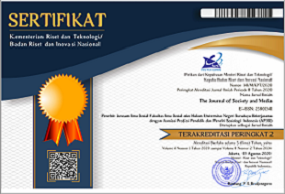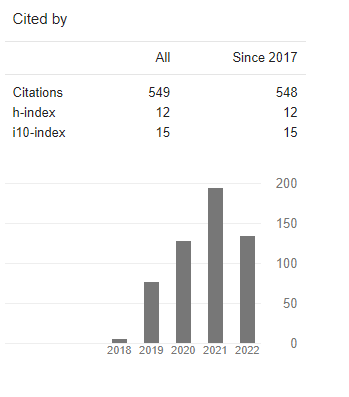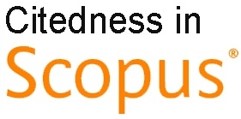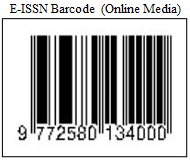The Experiences of Left-Behind Fathers: Breaking the Traditional Filipino Paternal Roles in Parenting
DOI:
https://doi.org/10.26740/jsm.v8n1.p64-81Keywords:
Filipino fathers, parenting, paternal roles, provider, nurturerAbstract
Many societies, including those in the Philippines, subscribe to the traditional concept that the father's essential responsibilities are being the provider and protector of his family. In Filipino parenting, fathers are providers for the family's economic needs while mothers are responsible for nurturing. More women are migrating to work abroad, leaving fathers to assume all primary parenting roles as providers, protectors, and nurturers. This has created a new family dynamic in recent years.This research paper explores Filipino fathers' experiences with a wife working abroad. Using an Interpretative Phenomenological Analysis (IPA), the researcher interviewed some employed fathers to reveal how they accepted, adapted, and made sense of the family set up as they simultaneously fulfilled the roles of both the father and mother to their children. Research revealed that when the mother left to work abroad, the father embraced their role in caring for their children. Filipino fathers are open to reversing traditional parenting roles. Although some fathers still let their wives take care of the children, many have become the primary caregivers. Parenting alone has helped them understand the importance of being involved in their children's upbringing
References
Aguiling-Dalisay, Grace, Francis R. Bambico, Roberto M. Mendoza, Edzel Jose L. Mirafelix, Mariano R. Sto Domingo, and Jay A. Yacat. (2000). Pagkalalake: Men in Control? Filipino Male Views on Love, Sex & Women. Quezon City: Pambansang Samahan sa Sikolohiyang Pilipino.
Anne Marie A. Baradi and Lourdes Agbing. (2008). FATHERING ADOLESCENTS WITH ABSENT-MOTHERS. Research Gate. https://www.researchgate.net/publication/281784019_FATHERING_ADOLESCENTS_WITH_ABSENT-MOTHERS/citations
Charlie Lewis and Michael Lamb. (2007). Understanding Fatherhood: A Review of Recent Research (York: Joseph Rowntree Foundation), 1. https://www.jrf.org.uk/sites/default/files/jrf/migrated/files/understanding-fatherhood.pdf.
Dowd, Nancy E. (2000). Redefining Fatherhood. New York: New York University Press. https://tinyurl.com/38vkx2nv.
Inhorn, Marcia C, Wendy Chavkin, and Jose?-Alberto Navarro. (2015). Globalized Fatherhood. New York: Berghahn Books. https://tinyurl.com/2p8fhxh6.
Lewis, Charlie, and Michael Lamb. (2007). Understanding Fatherhood: A Review of Recent Research. York: Joseph Rowntree Foundation. https://www.jrf.org.uk/sites/default/files/jrf/migrated/files/understanding-fatherhood.pdf.
Marsiglio, William. (1995). Fatherhood : Contemporary Theory, Research, and Social Policy. Thousand Oaks: Sage Publications, 1995. https://tinyurl.com/yc2b6vyz.
Medina, Belen T G. (2015). The Filipino Family. Diliman, Quezon City: University of The Philippines Press.
Nancy E. Dowd. (2000). Redefining Fatherhood (New York: New York University Press. https://tinyurl.com/38vkx2nv.
Parren?as Rhacel S. (2006). Children of Global Migration: Transnational Families and Gendered Woes. Quezon City: Ateneo De Manila University Press.
Perry, Armon R., and Cheri Langley. (2013). Even with the Best of Intentions: Paternal Involvement and the Theory of Planned Behavior. Family Process 52, 2. https://www.fatherhood.gov/sites/default/files/resource_files/e000002760.pdf
Peter B. Gray. (2014). International Journal of Intercultural Relations 39. Book Review. 205. https://doi.org/10.1016/j.ijintrel.2014.01.00
Smith, Jonathan A., and Mike Osborn (2015). Qualitative Psychology. Vancouver: University of British Columbia. https://med-fom-familymed-research.sites.olt.ubc.ca/files/2012/03/IPA_Smith_Osborne21632.pdf.
William Marsiglio (ed.) (1995). Fatherhood: Contemporary Theory, Research, and Social Policy (Thousand Oaks: Sage Publications, 1995). https://tinyurl.com/yc2b6vyz
Downloads
Published
How to Cite
Issue
Section
License
Copyright (c) 2024 The Journal of Society and Media

This work is licensed under a Creative Commons Attribution 4.0 International License.
 Abstract views: 4479
,
Abstract views: 4479
, PDF Downloads: 5464
PDF Downloads: 5464












